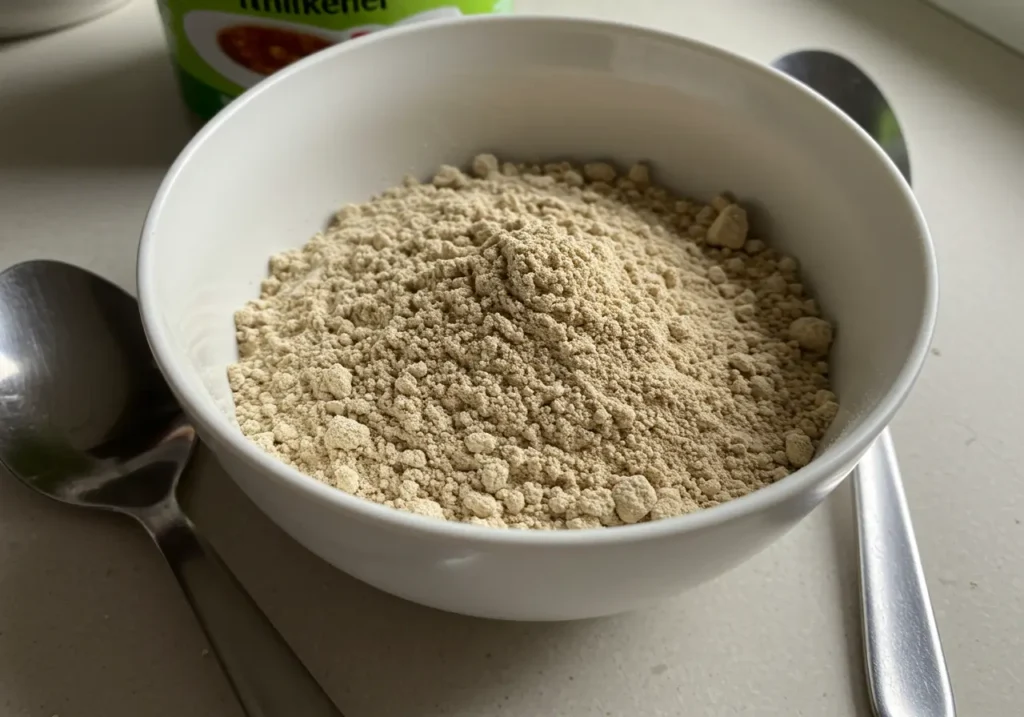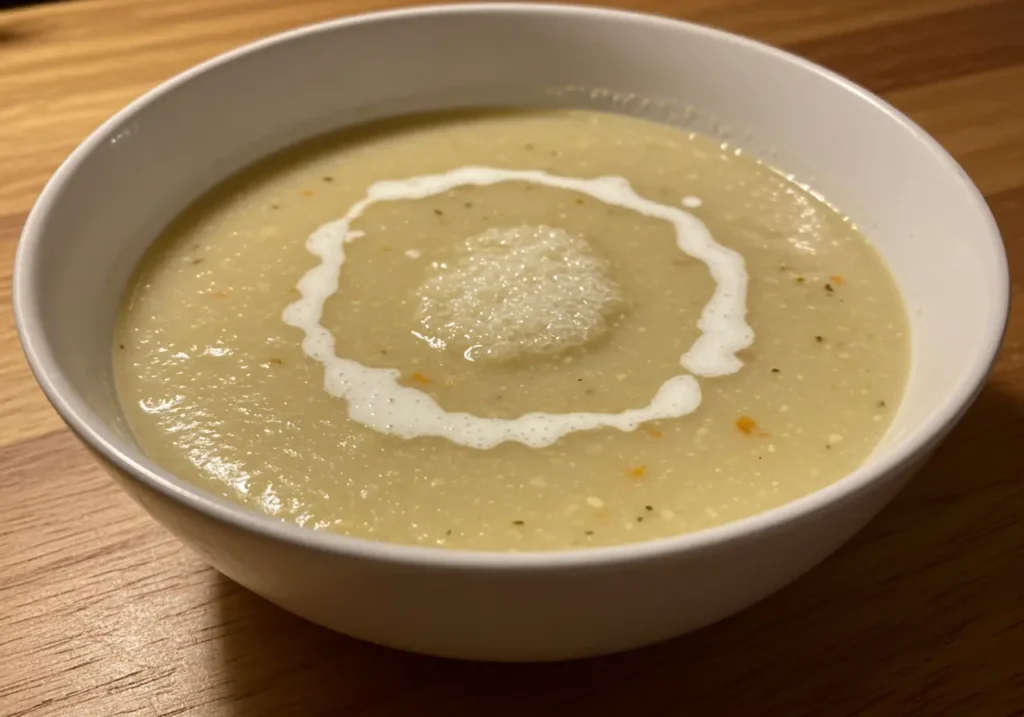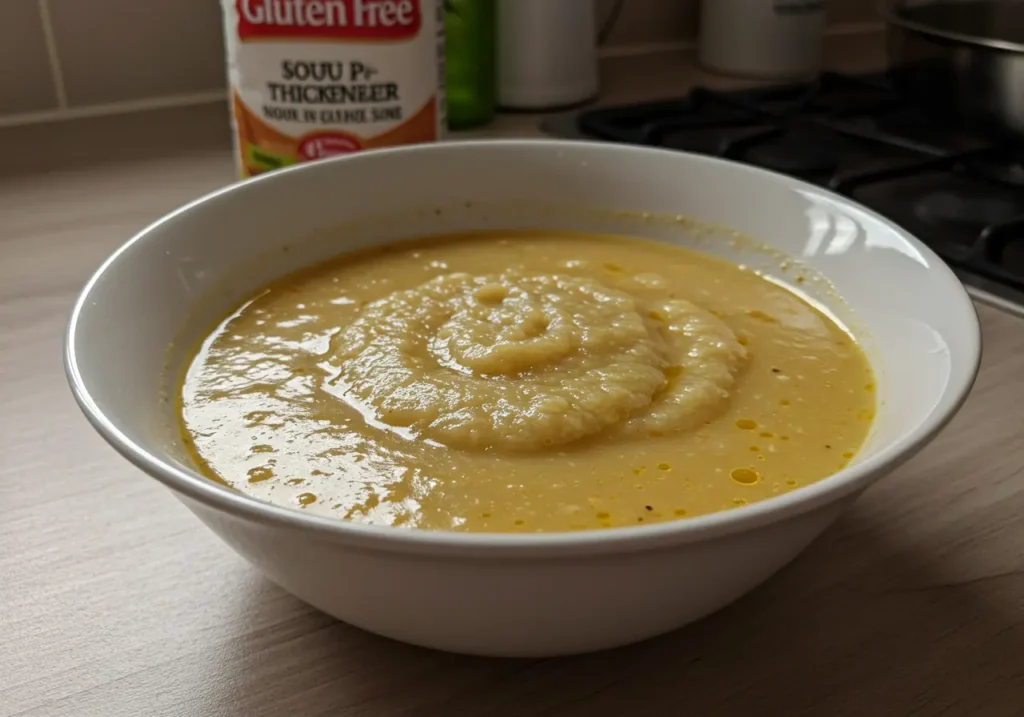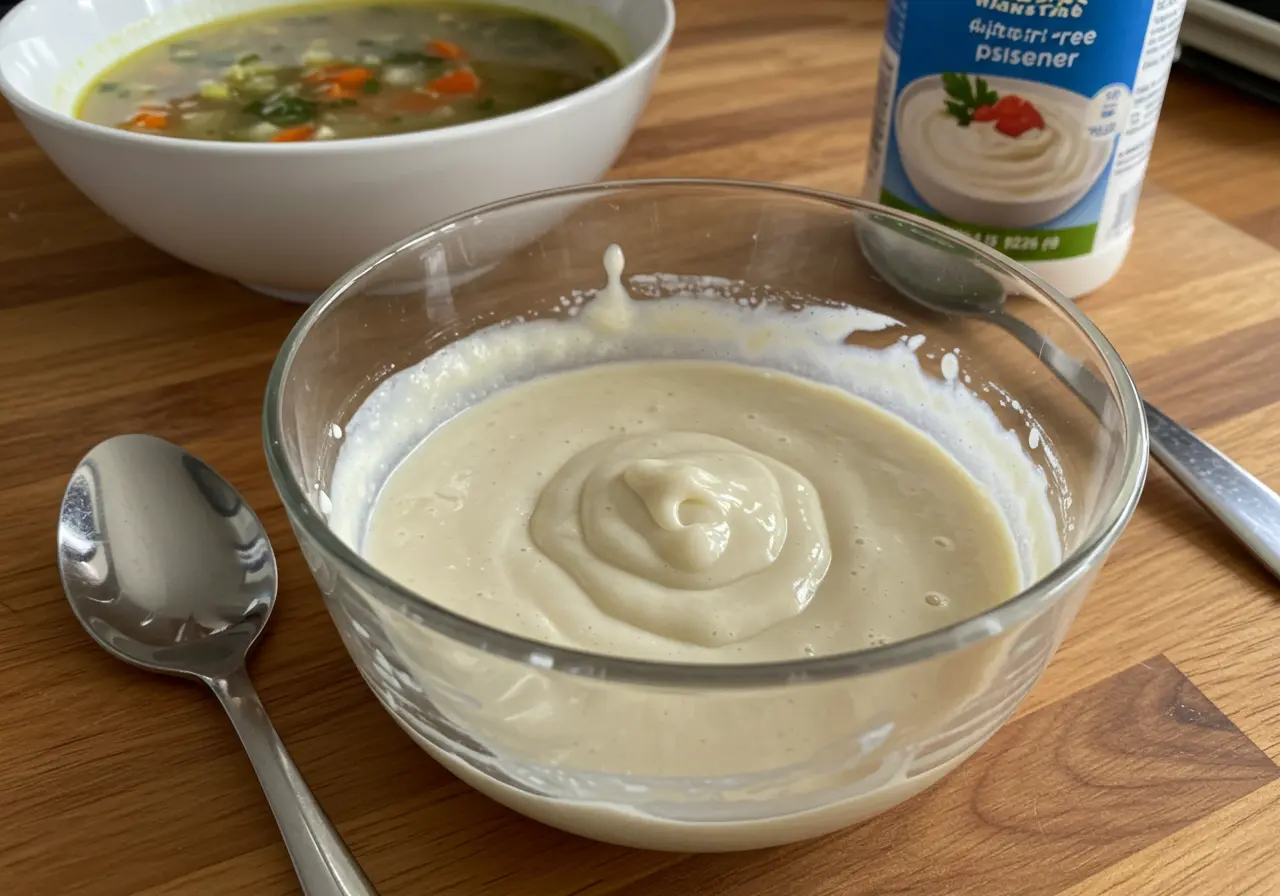What is a gluten-free thickener for soup? This article explores several excellent options for achieving the perfect soup texture without gluten. Learn about various gluten-free thickeners to enhance your cooking.
Understanding What Is a Gluten-Free Thickener for Soup
What is a gluten-free thickener for soup? This is a key question for anyone avoiding gluten. Gluten, found in wheat, barley, and rye, often acts as a thickener in traditional cooking. Therefore, finding suitable alternatives is crucial for those with dietary needs. Specifically, this guide will help you understand various gluten-free thickening methods for soups.
Why Traditional Thickeners Often Contain Gluten
Many common thickeners use wheat flour or modified food starch, which can contain gluten. Consequently, these are not safe for those with celiac disease or gluten sensitivity. Therefore, a need for gluten-free substitutes has risen. Thus, exploring other options is beneficial to all.
The Importance of Gluten-Free Options
Gluten-free cooking is a necessity for many. Indeed, it is also becoming a preference for some. Using the correct gluten-free thickeners lets you enjoy delicious soups. Therefore, it opens up a whole world of recipes.
What Is a Gluten-Free Thickener for Soup: Popular Choices

Let’s examine some of the most popular gluten-free choices. These alternatives help create satisfying, delicious, and safe soups.
Cornstarch: A Common Gluten-Free Option
Cornstarch is a very common and gluten-free thickener. It’s made from corn and is easy to use. However, it needs to be mixed with cold water first to avoid clumps. Moreover, it is a very budget friendly choice for thickening.
Using Cornstarch Correctly
To use cornstarch correctly, create a slurry with cold water before adding it to hot soup. Then, stir it well, and let it simmer. This way, you will have a smooth, lump-free soup. Also, this method ensures that the cornstarch evenly thickens the soup.
Arrowroot: A Light and Clear Gluten-Free Thickener
Arrowroot is another great gluten-free choice for thickening. It produces a clear and glossy finish in soups. However, like cornstarch, it also needs to be mixed with cold water first. Furthermore, it does not do well with high heat and extended cooking.
Best Uses for Arrowroot
Arrowroot works best in soups that do not need extended simmering. It’s suitable for lighter broths and sauces. Also, it’s a good choice if you do not want a cloudy appearance. Therefore, use arrowroot when clarity is important.
Rice Flour: A Gluten-Free Thickener with a Unique Texture
Rice flour, made from ground rice, is a gluten-free thickener. It adds a slightly different texture. However, it can be a little grainy if not used correctly. Accordingly, it needs to be used properly.
Incorporating Rice Flour in Soups
To incorporate rice flour correctly, mix it with cold water to form a slurry. Then, add this to your hot soup slowly, stirring continuously. Likewise, this prevents clumping and guarantees even thickening.
Tapioca Starch: A Gluten-Free Option for a Silky Finish
Tapioca starch, also called tapioca flour, is another useful gluten-free thickener. It gives soup a very smooth, almost silky texture. However, it can become sticky if overused. Therefore, add it gradually.
Tips for Using Tapioca Starch
When using tapioca starch, always create a slurry with cold water. Then, slowly add it to your soup. Also, avoid over-stirring, which can result in a stringy texture. Consequently, you will achieve a silky, smooth gluten-free soup.
What Is a Gluten-Free Thickener for Soup: Vegetable Purees
Using vegetable purees is another healthy and natural way to thicken soups without using gluten. Let’s explore how.
Pureed Potatoes: A Gluten-Free Creamy Thickener
Pureed potatoes are a fantastic gluten-free way to thicken soups. They add both thickness and a creamy texture. Moreover, they add nutrients and make the soup more filling.
Making a Potato Puree for Soups
To make a potato puree, simply cook potatoes until tender, and then mash or blend them. Afterward, add this puree to your soup to thicken it. Furthermore, this method is easy and flavorful.
Blended Root Vegetables: Gluten-Free and Nutritious
Other root vegetables, such as carrots and parsnips, can also be pureed. These options bring both thickness and extra nutrients. Furthermore, they add a subtle sweetness that enhances flavor.
Using Root Vegetable Purees Effectively
Puree cooked root vegetables and blend them into your soup. This gives a smooth and healthy thickening. Also, they add extra taste and natural color to the soup. Consequently, you will achieve a better soup.
Pumpkin and Squash Purees: Sweet and Gluten-Free
Pumpkin and squash purees add a touch of sweetness. They make soups rich and creamy and are naturally gluten-free. Specifically, these purees work well in autumn-inspired soups.
Adding Flavor with Squash Purees
Add pumpkin or squash puree near the end of cooking. This thickens the soup and adds a touch of seasonal flavor. Furthermore, they are naturally sweet, making it more enjoyable.
What Is a Gluten-Free Thickener for Soup: Other Unique Options

Besides the common thickeners, there are some unique and equally effective gluten-free alternatives.
Ground Nuts and Seeds: A Protein-Rich Option
Ground nuts and seeds, like almonds and sunflower seeds, also thicken soups. They add proteins and a very unique texture. However, they should be used in moderation.
Using Nuts and Seeds Correctly
To use nuts or seeds, blend them into a fine powder. Then, add this gradually to the soup, stirring constantly. This adds both nutrition and thickness. Indeed, it also adds flavor to the final dish.
Coconut Milk and Cream: A Gluten-Free Option for Richness
Coconut milk and cream are great at adding thickness. They bring richness and are also naturally gluten-free. Specifically, they are great in Asian-inspired soups.
Incorporating Coconut Milk
Stir in coconut milk or cream towards the end of cooking. This thickens the soup and makes it creamier. Also, it adds a touch of tropical flavor that can enhance your soup.
Chia Seeds: A Nutrient Boost and Thickener
Chia seeds are small seeds that can thicken soups. They absorb liquid and create a gel-like texture. Moreover, they add a boost of nutrients and fiber.
Using Chia Seeds in Soups
Add chia seeds to soups while they are still hot. Then, allow time for them to expand and thicken the soup. Also, they provide a health boost while they thicken your soup.
What Is a Gluten-Free Thickener for Soup: What to Avoid
Knowing what to avoid is just as important as knowing what to use when thickening soup without gluten. Let’s explore some common pitfalls.
Wheat Flour and Roux: Common Gluten-Based Thickeners
Wheat flour and roux are standard thickeners, but they contain gluten. Therefore, always avoid using these. Specifically, look for other gluten-free options instead.
Modified Food Starch: A Hidden Gluten Source
Modified food starch often contains gluten. Therefore, always check the ingredient list. Moreover, choose alternatives when possible.
Pre-made Soup Bases and Bouillons
Pre-made soup bases often contain hidden gluten. Therefore, always read the labels carefully. Also, making your own broth is a better gluten-free alternative.
What Is a Gluten-Free Thickener for Soup: Tips and Tricks
Using the best gluten-free thickener needs some important tips and tricks. This will guarantee the best outcome.
Always Make a Slurry
Before adding any starch, make a slurry with cold water. This will prevent clumping and make your soup smoother. Therefore, this is a critical step to get the best result.
Add Gradually and Stir
Always add your thickener gradually while stirring your soup. This allows for even thickening. Also, it prevents you from adding too much and making your soup too thick.
Adjust to Your Liking
Adjust the amount of thickener to reach your ideal consistency. Remember, it is about your own personal taste. Accordingly, make sure to experiment until you get the desired result.
What Is a Gluten-Free Thickener for Soup: Enjoying Flavorful Soups

Using gluten-free thickeners helps to make delicious and safe soups. Therefore, everyone can enjoy a bowl of warm, satisfying soup.
Exploring the World of Gluten-Free Cooking
By using these methods, you can expand your gluten-free cooking. Furthermore, it allows you to explore various options.
Confidently Enjoying Soup
With the correct knowledge and ingredients, you can easily make gluten-free soups. Thus, you can confidently enjoy your meals.
The Joy of Gluten-Free Thickening
Remember, choosing the right gluten-free thickener lets you enjoy great soups. Hence, you do not need to sacrifice the flavor and texture.
Frequently Asked Questions (FAQs)
How do you thicken soup without gluten?
You can thicken soup without gluten by using cornstarch, arrowroot, rice flour, tapioca starch, or pureed vegetables. These options act as gluten-free alternatives to traditional wheat-based thickeners. Each brings a slightly different texture and taste, so choose based on your recipe and preference.
How do you thicken sauce without gluten?
To thicken sauce without gluten, use a gluten-free starch like cornstarch, arrowroot, or tapioca starch. Combine the starch with cold water to make a slurry, then add the slurry to the simmering sauce. Alternatively, you can reduce the sauce by simmering it longer or add pureed vegetables to increase its thickness.
What is the best gluten free flour substitute for thickening?
Cornstarch is often considered the best gluten-free flour substitute for thickening because it’s easily available and works well in most recipes. Other excellent options include rice flour, tapioca starch, and potato starch. Each one offers slightly different textures. Thus, choose based on the dish you are making.
What is a good alternative to soup thickener?
A good alternative to traditional soup thickeners like wheat flour are pureed vegetables, such as potatoes, carrots, or squash, which can add thickness and nutrients to soup. Coconut milk or cream, chia seeds, and ground nuts are also excellent gluten-free alternatives. These provide various flavors, textures, and also nutritional benefits.

